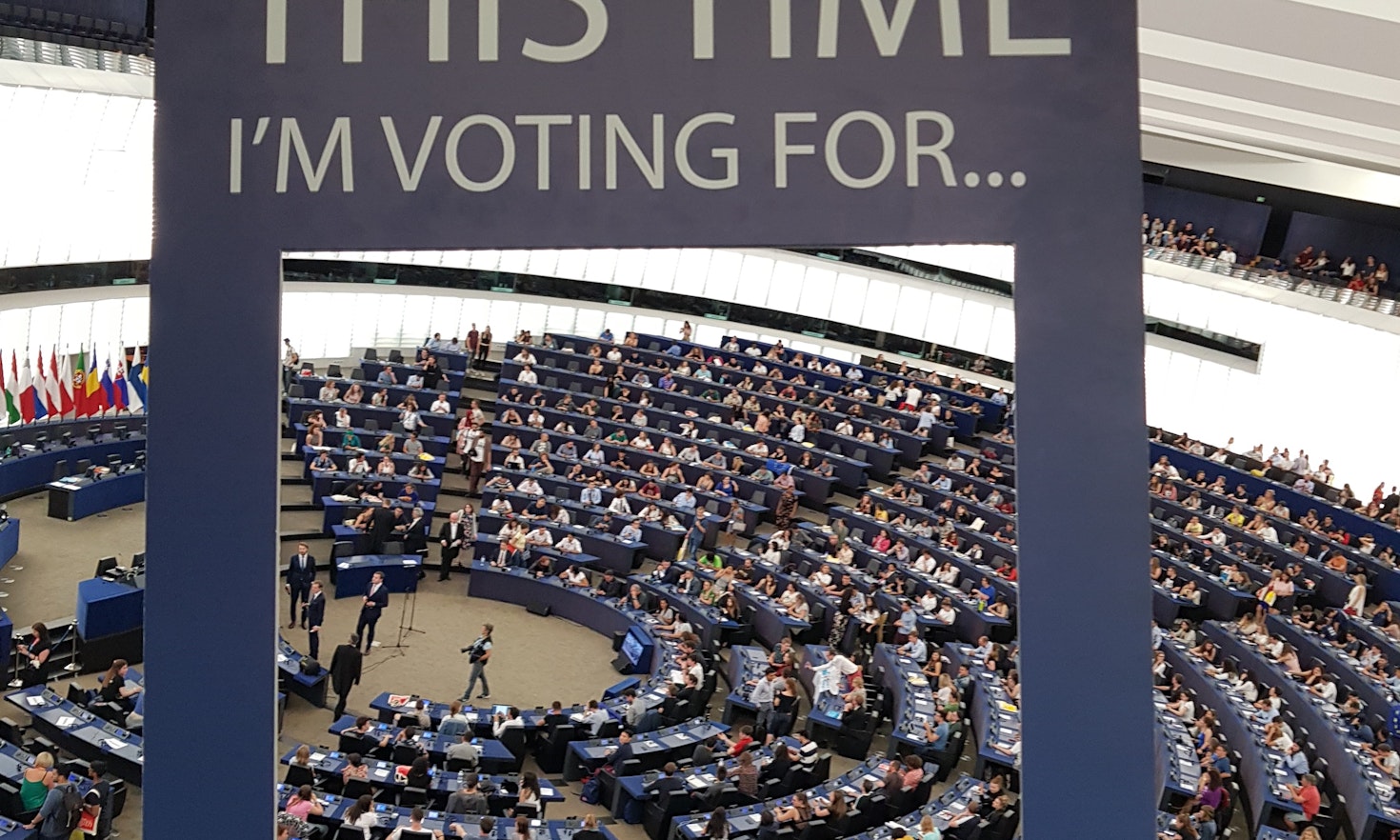The European Parliament election is one of the most significant elections in the world based on both the sheer number of entitled voters and the international significance of the parliament and its policies. The election turnout increased at the EU election 2019 for the first time in history. However, it seems that European citizens in the past have not realized the importance of this supranational election. So far, in all eight election cycles before the 2019 EU election the voter turnout has continued to decline leading to an all-time low of 42.62% in 2014. This is remarkable, especially because the Eurobarometer, which measures public opinion in relation to the EU, indicates that the reputation of the European Union in most of member states is constantly improving (European Commission, 2013 & 2018). While the turnout rates of national and European elections have decreased constantly over the decades, the turnout at the European election is on average 20-25% lower than for national elections. Although with the estimations of voter turnout at the EU election 2019 (≈50%) the gap is still above 15 % on average.

Graphic 1: Voter Turnout for National Elections vs EU-elections Over Time (1989-2014)(author’s graph)
After taking into consideration the distortion by the national differences in election readiness and intention (created, for example, by compulsory voting laws in Belgium, Greece, Cyprus and Luxembourg and by some other states that tend to hold national/local elections on the same day as EU elections), studies support the second-order-election-theory in relation to EU elections (Gasser, 2015). This means that EU elections are considered to be of secondary importance to voters, in comparison to national parliamentarian/presidential elections, which are also known as first order elections.
Why do (potential) voters feel a lower urge to vote in an EU Parliament election?
- For many voters, decisions of the European Union are too far removed from their daily lives. This is mainly because national/local policies are promoted more vigorously in the domestic environment than decisions on the European Union-level, which leads to the misconception that “less is at stake” in EU elections.
- The European Union still struggles with democratic deficits (e.g. the commission president is not elected directly, there are 28 different election rights based on the national ones instead of one central EU-election law and some member states, like Hungary, are slowly becoming illiberal democracies)Furthermore, unfortunately, some social classes are quite underrepresented.
- Triangle of indifference (Mittag, 2013): The parties’ lack of interest in content-related, resource-intensive election campaigns, and the poor quality of media reporting when it comes to EU-issues leads to voters’ lack of interest, which in turn increases the parties’ and media’s lack of interest even further.
- Many states, like Slovakia (last voter turnout was 13%) or Czech Republic (18%) are very strong supporters of the EU and their electorates indicated considerable enthusiasm for joining the EU when consulted in 2003. However, it seems like the citizens assess their own impact as a small member on the broad playing field as relatively insignificant and they hope and believe that the bigger players are working for the communal good. In addition, the Slovaks had already to vote three times in 2014 in national elections before the EU elections took place, which resulted in strong election fatigue. This has also occurred this year, which resulted in a relatively low turnout again (around 22 %; +8/9%)
- The EU is a unique concordance system: European parties work better (with more consensus) and more effectively together than within national parliaments. Therefore, in Europe the parties are not fighting against each other during and before an election cycle. This was particularly obvious in 2014, when the TV-debates were more like tea parties than a competition. This is not very appealing for potential voters, since they cannot select based on differences.
- The introduction of the Spitzenkandidaten process in 2014 (whereby ahead of European elections, European political parties appoint lead candidates for the role of the Commission President) represents an extension of a supranational element. Nevertheless, Maurer (2013) sustains that as long as national election campaign impulses continue there will be no appreciable long-term change in the level of electoral interest in the European elections. That is the crux of the matter since until now member states and political parties were not able to agree on a Europe-wide election campaign (However, this election some new pan-European parties were founded, e.g. VOLT, which will compete in 7 member states). This is the main reason why the personalisation of the election with Spitzenkandidaten process has not been successful and has not had any significant effect on voter mobilisation (with Greece as an exception) (Dialer et al., 2015; Hobolt, 2014). It seems that little has changed, for example, the TV-debate in mid-May on Eurovision revealed no real difference or confrontation between the candidates. It seems that the personalisation, nowhere near the same level as for example in the USA (admittedly, is not a good role model when it comes to democratic processes), has not helped to connect voters any deeper to the electoral process and thus has not increased voter turnout so far. It is most likely that other factors, like the proposed danger of far-right wing parties or the relatively fresh scandal in Austria have positive effects on voter turnout. However, more research has to be conducted after the overall final data is available after EU election 2019.

Graphic 2: Difference between EU-National Election Turnouts (nearest to 2014) (author’s graph)
Therefore, what can we do to improve voter turnout in EU elections?
- We should try to hold national policymakers accountable for their actions and stop national states from outsourcing the blame for domestic problems and decisions to the EU (For example, Germany with their planned toll system, Austria with their infringement proceedings for discrimination of Austrian child benefit rules, etc.)
- Evaluation of the Spitzenkandidaten process, which might entail developing it to allow the nomination one Spitzenkandidat for every European political party in each member state who would then fight for the same EU-topics and out of this cohort the president of the commission would be elected – or introduce a central EU voting law instead of 28 national ones.
- The media and political parties have to acknowledge the importance of the EU and to put more effort into the political debate – not only when a direct election is imminent
- Reminding each other in how many fields the European Union has a (positive) impact on our daily life. If you want to get a clear sense of this have a look on https://what-europe-does-for-me.eu/en/home
- Do not forget: when everybody votes, everybody wins! Therefore, even if elections are behind us, in five years we’ll have to vote again, and please do so, so that the EU election can be rather seen as a Goliath than a David!
PS: More insights about the last European Parliament Election and the Second-order-election-theory can be found here: https://www.alexandria.unisg.ch/255506/
Literature:
- European Commission (2013): Standard-Eurobarometer 79 – Fall 2013 – Public opinion in the European Union, online at: http://ec.europa.eu/public_opinion/archives/eb/eb79/eb79_publ_en.pdf[17.05.2019].
- European Commission (2019): Closer to the Citizens, Closer to the Ballot, online at:
- http://www.europarl.europa.eu/at-your-service/en/be-heard/eurobarometer/closer-to-the-citizens-closer-to-the-ballot [21.05.2019].
- Dialer, D.; Maurer, A.; Richter, M. (2015): Handbuch zum Europäischen Parlament, Baden-Baden.
- Gasser, F. (2015): Das Dilemma der EU-Wahlbeteiligung – Europawahlanalyse 2014. ICER Papers on European Governance, 2015, 5.
- Hobolt S. B. (2014): A vote for the president? The role of Spitzenkandidaten in the 2014 European Parliament elections, in: Journal of European Public Policy, Vol. 21(10), 1528-1540.
- Maurer, A. (2013): Der Preis der Stärke, in: Frankfurter Allgemeine, Published: 20.10.2013, online at: http://www.faz.net/-hf2-7im6k [05.05.2019].
- Mittag, J. (2011): Im Zeichen der Negativspirale des Desinteresses? Die Europawahlen 2004 und 2009, in: Mittag, J. (Hrsg.): 30 Jahre Direktwahlen zum Europäischen Parlament (1979 – 2009), 231-246, Baden-Baden.
 | Florian Gasser is a PhD candidate at the Institute for Systemic Management and Public Governance at the University of St. Gallen. He already completed 5 university degrees at the University of Innsbruck in the field of European Politics, International Business & Economics and Accounting, Auditing & Taxation with an exchange year in the USA. His research interest includes Management Compensation Systems, Decision Making Behaviours, Democratic Processes and Election Research (voter behaviour). In his spare time he participates in various conferences and competitions (of any kind) and is always eager to discuss current international affairs. Gasser can be reached via email (florian.gasser@unisg.ch), Twitter (@FlorianGasserEU) and his Instagram project (@EU_Phorien). |

 Mattia Bottino
Mattia Bottino




 Mattia Bottino
Mattia Bottino
 Debarshee Dasgupta
Debarshee Dasgupta
 Amanda Domingos
Amanda Domingos